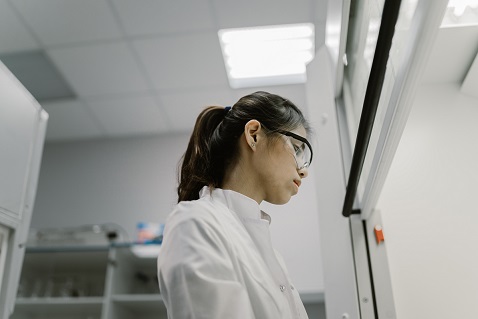A research team in Japan is able to replicate human hair repeatedly in a lab situation.
Researchers from Yokohama National University, Japan, who are studying the process of hair growth, have successfully created hair follicles in lab-based cultures. These in-vitro experiments could be highly useful for replacement growth in hair loss disorders, including male pattern baldness and alopecia. The results would be able to be applied to both males and females and would be noticed much more quickly than current hair growth treatments including keratin and Rogaine. It may also be less costly to regrowth hair in the manner studied than by using traditional hair implant surgeries.
The researchers produced fully mature follicles utilizing a technique involving the creation of skin organoids in a Petri dish.
“Organoids were a promising tool to elucidate the mechanisms in hair follicle morphogenesis in vitro,” said Dr. Tatsuto Kageyama, of the university.

Making use of two types of embryonic cells, the team was able to grow hair shafts at near 100 percent efficiency. The organoids produced fully mature follicles approximately three mm long after just 23 days. The scientists monitored the formation and color of the follicles, fine-tuning their process along the way. For example, they discovered that adding in a drug that boosted melanin, a natural pigment, improved the color.
“The model could prove valuable for better understanding of hair follicle induction, for evaluating hair pigmentation and hair growth drugs, and for regenerating hair follicles,” said Kageyama, the lead author of a paper published in the journal Science Advances.
Now, the team hopes to further optimize the organoid culture system using human cells.
“Our next step is to use cells from human origin, and apply for drug development and regenerative medicine,” said co-author, Professor Junji Fukuda.
Minoxidil, the key active ingredient in Rogaine, has been on the market for use as a hair restoration product for more than three decades. The treatment has been approved by the Food and Drug Administration (FDA) to treat male and female pattern baldness and is available over the counter in liquid or foam form. A review of Rogaine completed this year linked the “anti-inflammatory, vasodilating, and anti-androgenic effects of minoxidil” to hair regeneration. Yet, the exact reasons why the product works are yet to be fully known. It can take up to four months (much more time than 23 days) to see results and individuals often report they do not regrow all of the hair they’ve lost.
There are many reasons not to use Rogaine, even if it is effective. The FDA warns consumers should steer clear if “pregnant or breastfeeding; your hair loss comes on suddenly and falls out in patches; you’re under the age of 18; you notice unexplained hair loss; you experience hair loss after giving birth; your scalp is discolored, itchy, infected, or painful to touch; your hair loss is caused by hair products, chemicals, or hair grooming methods; (or) your hair loss is caused by another condition, like thyroid disease or alopecia areata, nutritional deficiencies, scarring of the scalp, or medications, like chemotherapy.”
Thus far, the team in Japan has not reported conditions in which their process for hair growth should be avoided. The research, of course, is still new and ongoing. Thus, only time will tell if it makes it to market and becomes one of widespread use.
Sources:
Cure for Baldness Could Be on the Horizon as Hair Cells Are Generated in a Lab


Join the conversation!